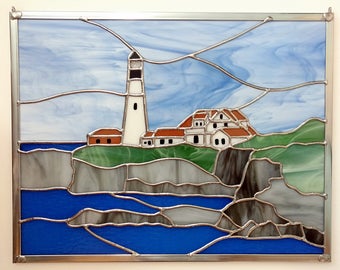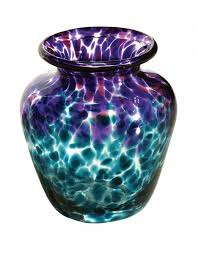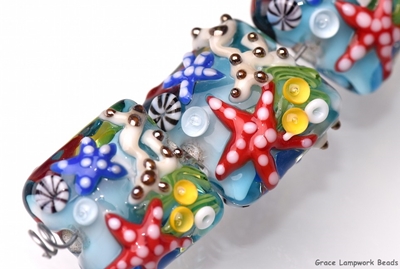
Glass Arts 101
Have you heard the terms “stained glass”, “fused glass”, “blown glass”, and “lamp working”, but aren’t sure what the differences are between them all? I thought I’d outline the basics to give a better understanding of each one.
First let’s talk about the glass itself. Stained glass is colored and clear glass that is manufactured and sold in sheets, rods, chips, and frit (crushed glass). It comes in many different textures as well as colors. There are about 10 major companies responsible for manufacturing most of the stained glass on the market today, with Kokomo, Wissmach, Ocean Side, and Youghiogheny being some of the most popular in the United States.
Stained Glass art is the term given to art created by cutting out pieces from stained glass sheets, and soldering them together using either lead came or copper foil. (See my blog article on stained glass construction methods for more detail on the differences there). Stained glass art can be created in many sizes and designs, from the smallest suncatchers to large windows as well as three dimensional sculptures and containers. Many other types of items can also be incorporated into a stained glass piece, including agates, whole or broken plates, and glass jewels to name a few.
Here is an example of one of my stained glass panels
. 
Fused Glass art refers to pieces of glass that are melted, or “fused” together in a glass kiln. Stained glass sheets, rods, and frit are used for this, but they are specially formulated so that their COE (coefficient of expansion) is all the same to ensure that they are compatible when fused together. If you try to fuse glasses with different COE’s together, they will shatter. Fused glass pieces that are not flat are shaped with a second firing using ceramic and metal molds. The final outcome of a fused glass piece is controlled by the kiln temperature program used during the firing process. Higher temperatures ( over 1450 degrees F.) result in more rounded fully fused pieces, while lower temperatures result in more defined semi-fused pieces. Glass fusing is often used to create jewelry, dishes and bowls, vases, and glass paintings.
Here is an example of one of my fused glass bowls using a weaving technique.

Blown glass refers to the art of using molten glass to create glass pieces. Molten glass is kept liquid in a furnace, and gathered onto the end of a blowpipe. Then the artist blows air into one end to make a glass bubble, and then rolls it back and forth, adds additional layers of glass, and reheats it in the furnace multiple times to work it into the desired shape with various tools. Many different glass pieces can be made with this method, including wine glasses, vases, and freeform art pieces.
Here is an example of a blown glass vase.

Lamp working is the art of shaping glass using a torch to heat glass rods into various shapes. Many glass paperweights and beads are made with this method of glass working.
Here is an example of some lamp worked beads.

It is also common for multiple methods of glass working to be incorporated into one art piece. For example, I have created fused glass pieces that I incorporated into stained glass panel designs. A glass blower may use lamp work to add detail to their blown glass pieces. Lamp worked beads could be incorporated into stained glass and fused glass pieces. The only limit is the glass artist’s imagination!
